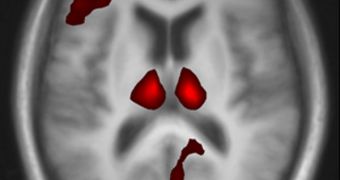Using an new observations technique, researchers will soon be able to watch patterns of neural activation in the human brain, as drugs destined to fight conditions such as Parkinson's disease start affecting their specific targets.
The new brain imaging method could also be used to investigate how blood flow changes from one brain region to the next, and especially in some key structures that are affected by this form of dementia.
Neuroscientists could use this approach to determine which drugs are effective against the disease faster than by using conventional methods. The technique is called perfusion magnetic resonance imaging, or pMRI.
Experts with the Washington University in St. Louis (WUSL) School of Medicine (WUSM) say that this is the first time pMRI is used in humans, and detail the results in the December 1 issue of the esteemed Journal of Neuroscience.
The team that developed the method explains that it may be soon possible for researchers to use similar types of brain scans to speed up the development process of new drugs for other conditions as well.
Maybe even more importantly, it could give clinicians a very helpful tool in determining whether therapies relying on established drugs are working or not.
“This study is important because it demonstrates this may be a useful approach for studying investigational drugs. We were able to determine both that the drug gets into the brain to exert its effects and that it has a larger effect at a higher dose,” says Kevin J. Black, MD.
The WUSM expert was the lead investigator on the pMRI tests. In its analysis of the experimental drug SYN115, the team was able to determine the precise blood level the compound needs to have in order to affect certain regions of the brain.
Using the new approach, the group also determined that a combination of SYN115 and levodopa (the most commonly used drug against Parkinson's) could be more effective in treating the disease than each of the drug is on its own.
The new observations method “could shorten the time it takes to get medications to market because you don’t need as many patients or as much time to determine whether a drug has an effect in the brain,” the principal investigator explains.
“This imaging technique could make it possible to significantly shorten the time from drug discovery to the launch of large, clinical studies to learn whether it truly is effective,” he goes on to say.
But the potential range of applications for pMRI goes well beyond Parkinson's disease, Black and his colleagues say. They add that depression could be another target for observations.
“Antidepressant drugs work for some people and not for others. The drugs exert many effects within the first two hours, but often they don’t begin to relieve depression symptoms for a month or more,” Black says.
“Theoretically, this imaging test could determine within hours whether we’re going to help patients, rather than waiting weeks to see if the drug is alleviating depression,” he concludes.

 14 DAY TRIAL //
14 DAY TRIAL //